A history of BitShares
The name of Dan Larimer features in a number of histories of both blockchain technology and cryptocurrencies. Larimer is very much the man behind BitShares, which originally went under the name of ProtoShares.

Dan Larimer, founder of BitShares
Described by fans as a “visionary programmer” and by journos as a “crypto prodigy”, he is actively involved with EOS – currently the world’s fifth-largest cryptocurrency – the blockchain-based social media platform Steem and BitShares, which he set up in July 2014 to act as a cryptocurrency currency exchange system. So at nearly four years old it’s one of the oldest blockchain projects.
Larimer’s interest in digital currencies goes back further. In 2009, he was working on devising one and discovered Bitcoin, leading to a correspondence with Satoshi Nakamoto – who legend has it is creator of perhaps the most famous digital currency of all – in a Bitcoin forum.
Larimer expressed concern at the number of centralised exchanges that were being shut down at that time and decided that the future lay in decentralised exchanges. Five years’ work resulted in the creation of BitShares and the BitUSD, described as the first trustless cryptocurrency pegged to the US dollar.
Many things to different people
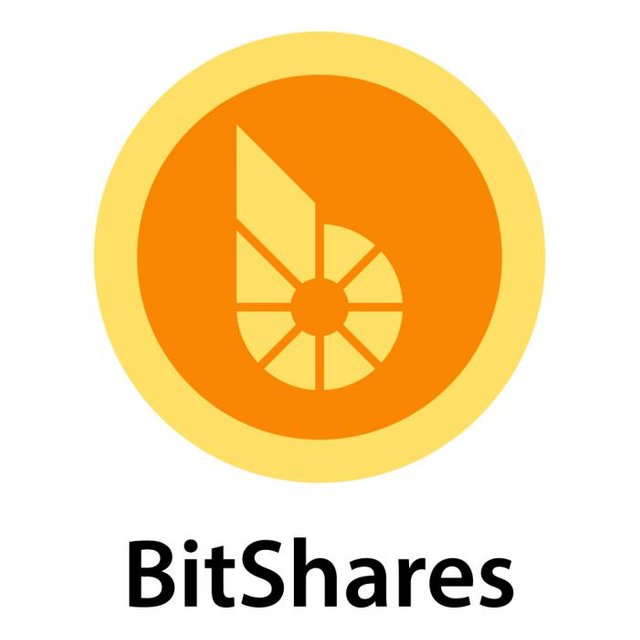
BitShares logo: Shutterstock
So what is BitShares? Wikipedia’s basic summary is that it is an “open source, public, blockchain-based, real-time financial platform. It provides a decentralised asset exchange – similar to the New York Stock Exchange (NYSE) but for cryptocurrencies and without the need to trust a central authority to handle all the funds – that facilitates trading using an international network of computers, in which anyone can take part.”
Larimer himself describes BitShares as “many things to different people”. These various potential interpretations are set out in some detail in his December 2014 blog, but in summary the platform encompasses a network, bank, ledger, company, exchange, software, community and the cryptocurrency token abbreviated to BTS.
Its creator suggests that BitShares could even be regarded as a country and that it “is one of the most important tools that any community can use to secure their freedom; an idea whose time has come.”
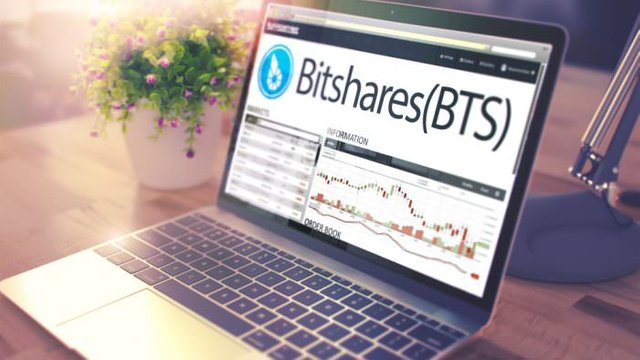
The BitShares Asset Exchange is described as ‘A Fast and Fluid Trading Platform’ : Shutterstock
On the BitShares Asset Exchange website, the heading is ‘A Fast and Fluid Trading Platform’ and the underlying description reads:
“BitShares provides a high-performance decentralized exchange, with all the features you would expect in a trading platform. It can handle the trading volume of the NASDAQ, while settling orders the second you submit them. With this kind of performance on a decentralised exchange, who needs risky centralised exchanges?”
The site goes on to give examples of centralised exchanges that turned out to be “unreliable and untrustworthy”, such as MF Global, Mt. Gox and BitStamp, where users were cheated because they allowed a third party to hold their funds.
The BitShares decentralised exchange offers the ability to trade swiftly and cheaply in two types of assets: smartcoins and user-issued assets. The latter are created by the platform’s users, so anyone owning Bitshares (BTS) can issue their own asset in the form of custom tokens that can be registered on the platform.
The technology and the team

BitShares’ blockchain technology utilises a Graphene layer: Shutterstock
In addition to creating BitShares, Larimer worked on a blockchain technology that would support a decentralised exchange. The result, dubbed a Graphene layer, is used for both Steem and BitShares, which are among the most actively-used blockchains. Since March 2016, BitShares has been a part of the Microsoft Azure Blockchain as a Service (BaaS) package.
Graphene is regarded as the “special sauce”, with the ability to handle thousands of transactions in a second and a block time of just 1.5 seconds, enabling BitShares to handle more transactions per second that MasterCard and Visa combined.
BitShares’ co-founder is Charles Hoskinson, one of the eight original co-founders of Ethereum, who then left to set up IOHK, an engineering company that develops cryptocurrencies and blockchains for corporations, government entities and academic institutions.
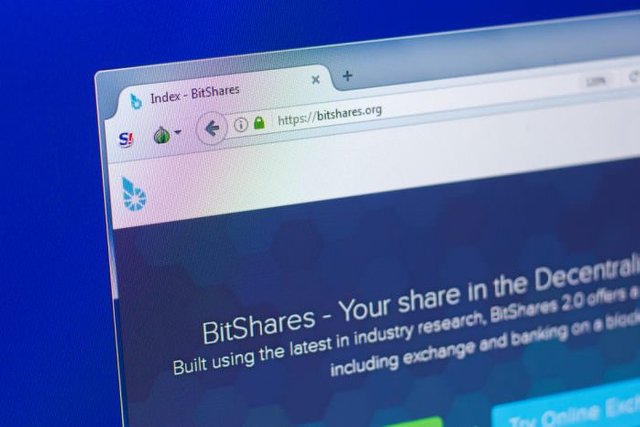
Home page of BitShares website: Shutterstock
However BitShares’ internal administration is controlled by a framework known as a Decentralised Autonomous Company (DAC), with the aim of enabling BitShares holders decide the future of BTS. BitShares is itself essentially a DAC and designed to ensure compensation for those involved in developing the platform.
This also means that while Dan Larimer is very much the public face of BitShares, information on the rest of its team is scanty. Theoretically, nearly every user actively engaging with the platform qualifies as a member.
BTS coins are also different – distinguishable by being less of a currency than a security that can be used as collateral, but cannot be mined. Tokens can be created on the BitShares network and converted to BTS, which is then convertible to BitAssets, which in turn are tied to real-world markets.
BitUSD, bitEUR, and bitCNY are based on the current price of the dollar, euro, and yuan respectively. bitGOLD is based on the price of gold, bitSILVER on that of silver.
A positive press
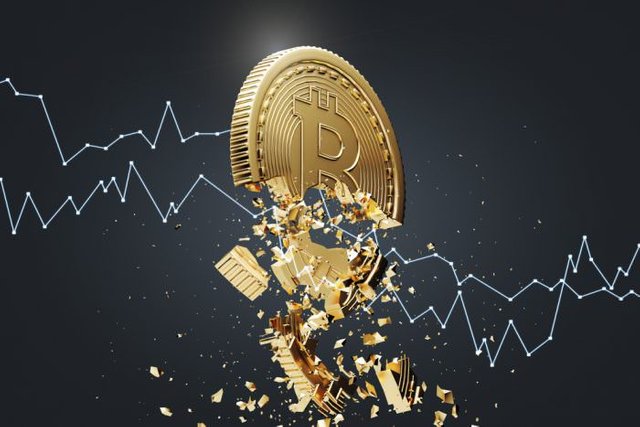
Goldman predicted a cryptocurrency market crash back in February: Shutterstock
In February this year, Goldman Sachs issued a scathing commentary on cryptocurrencies, predicting that the majority of them would fail and the value fall to zero (although it has since launches its own crptocurrency – the Circle USD Coin – via its Circle payment start-up). However, generally coverage of BitShares has been more favourable, as commentators believe that it is underpinned by more solid foundations.
Former business analyst and Bank of America operations manager Brian Penny, who now provides commentary for CryptoBriefing, recently wrote: “BitShares has a solid network in place to avoid being a tragic failure of a crypto market crash. Its price-stable smart coin-backed network removes middle-men to optimise trading, even allowing over-the-counter (OTC) trades.
“Assets are paired with fiat currencies, precious metals, etc., to eliminate market volatility. It also uses the Open Ledger DEX and Gateway to increase trading possibilities.”
Penney also believes that BitShares has the edge over the regulation currently governing Wall Street as it eliminates such dubious practices as high frequency trading and other forms of insider trading that have come under the spotlight.
However, he cautions that it’s not immune to the effects of a market crash and that BitShares “has a long road ahead of it to prove itself worthy of its ambitions.”
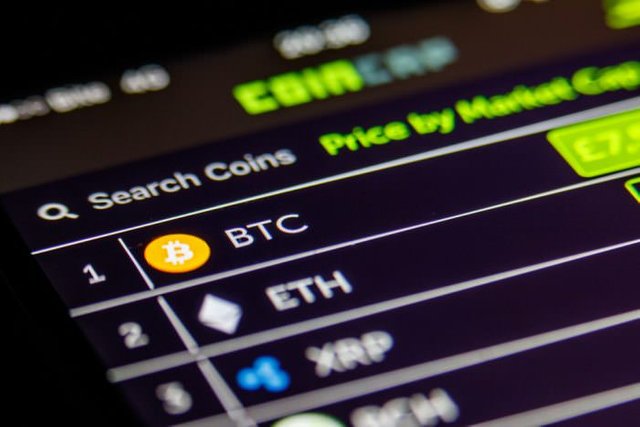
Fans of BitShares believe it is radically transforming crypto trading: Shutterstock
The CryptoRecorder site believes that Bitshares is revolutionising the method of crypto trading – thanks to its blockchain platform it removes the need to convert crypto to fiat in order to stabilise the investment. Instead, traders “can convert the virtual currencies to another digital asset on BitShares that has its value tethered to a real-life asset, for example, when BitUSD is tethered to the US dollar.”
Potential investors in BTS can purchase it on the BitShares Asset Exchange by trading another cryptocurrency for it, or directly from exchanges such as ZB.COM, Binance, Huobi, Poloniex and Gate.io.
Noting the cryptocurrency market turmoil of recent days, CryptoRecorder comments: “Decentralised exchanges are becoming the future of buying and selling digital assets. BitShares has the potential to recoil higher and recover the [recent] losses. At the moment, BitShares has a market capitalisation of $415,579,620 and a trading volume of $28,319,200.” Impressive figures, but the market cap has come down sharply in recent weeks.
Text by Graham Buck
Originally published here: https://dex.openledger.io/a-history-of-bitshares/
Follow OpenLedger on socials
Nice article.
Bitshares a platform that doesnt have any weeknesses.
It is simple to use, simple to trade, your account name is your wallet adress, you can buy bitassets which are bitusd, bitcny and escape the market volatility.
With all of this above you can make more bitshares with time trading more coins, trading with bitassets and with trading with gold.
Unfortunately, a lack of marketing and liquidity are its main weaknesses...technically its very sound.
That's true... but things are changing really soon and fast...
Great history overview. Most people these days don't realize how it all started.